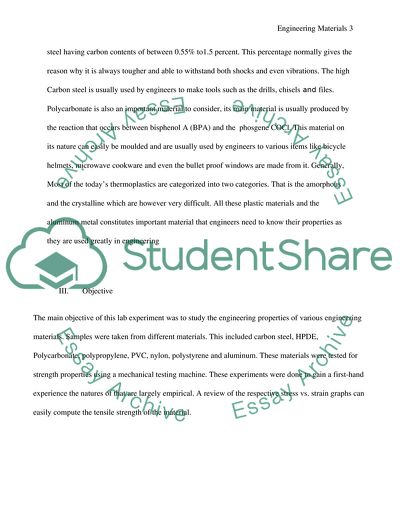Cite this document
(Engineering Properties of Various Engineering Materials Lab Report Example | Topics and Well Written Essays - 2500 words, n.d.)
Engineering Properties of Various Engineering Materials Lab Report Example | Topics and Well Written Essays - 2500 words. https://studentshare.org/engineering-and-construction/1825897-engineering-materials
Engineering Properties of Various Engineering Materials Lab Report Example | Topics and Well Written Essays - 2500 words. https://studentshare.org/engineering-and-construction/1825897-engineering-materials
(Engineering Properties of Various Engineering Materials Lab Report Example | Topics and Well Written Essays - 2500 Words)
Engineering Properties of Various Engineering Materials Lab Report Example | Topics and Well Written Essays - 2500 Words. https://studentshare.org/engineering-and-construction/1825897-engineering-materials.
Engineering Properties of Various Engineering Materials Lab Report Example | Topics and Well Written Essays - 2500 Words. https://studentshare.org/engineering-and-construction/1825897-engineering-materials.
“Engineering Properties of Various Engineering Materials Lab Report Example | Topics and Well Written Essays - 2500 Words”. https://studentshare.org/engineering-and-construction/1825897-engineering-materials.


